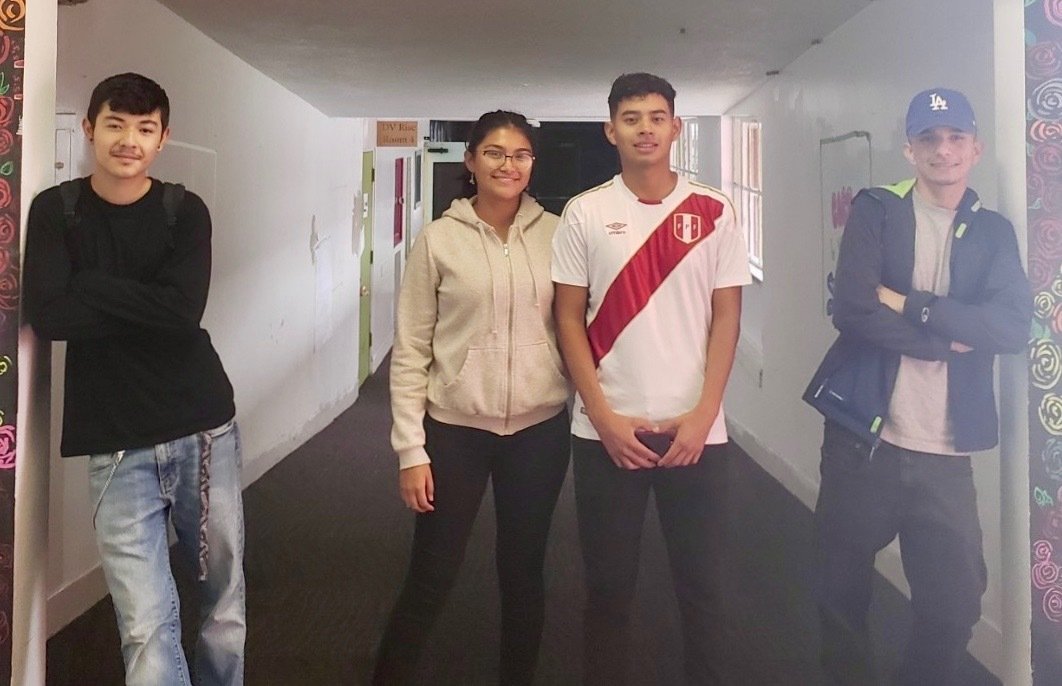4 Students Describe Struggles Many Latinx Students Face
These students discussed their Latinx identity impacts their high school experience. Here's how their school is supporting them.

This blog post was written from the voices of four Latinx students at Da Vinci RISE High School. The students who contributed to this blog not only wanted to share their experiences as Latinx students but also wanted to give readers the opportunity to reflect on how they can lift up the voices of Latinx students, parents, and staff.
Q: What unique challenges or difficulties do Latinx students face?
Jonathan: Many students who are Latinx have parents who are immigrants and that comes with unique struggles. My mom doesn’t really know English and didn’t finish school. Whenever we do things at school my mom doesn’t really understand what’s going on and misses out. Like myself, a lot of my Latinx friends have to deal with adult responsibilities. Latinx parents may have to deal with language barriers, immigration problems, fears of deportation, housing and food insecurity and have to work multiple jobs. Latinx students sometimes have to help out with taking care of siblings while parents work and may have to also get a job to help the family. School can’t always be a top priority over survival.
Santiago: As a first-generation Latinx student, I had no models in my family who graduated high school and went to college, so I didn’t realize how much I didn’t know about college until it was too late. I didn’t know anything about the different types of colleges, requirements, application deadlines or what financial aid is and how to get it.
Jose: Latinx students struggle more at school especially when their parents don’t fully understand or speak English and can’t help them with their homework.
Q: Why is it important for Latinx students to have role models working at their school who reflect their image?
Jonathan: Having Latinx staff at my school makes me feel like I’m not alone. They can connect with us and relate to our experiences and struggles. They can help out families who may not speak the language and make sure they understand what is going on at school.
Santiago: It is very motivating to see Latinx professionals who are successful because it shows me that it is possible. It is especially motivating to see Latinx professionals who are first-generation like me.
Q: What can teachers do to best support Latinx students?
Jonathan: I have seen a lot of teachers treat everyone the same, but we are not all the same or dealing with the same problems. Teachers should understand that we might have other priorities such as working or taking care of siblings and school can’t always be our main focus.
Jose: Teachers should have empathy for students whose first language is not English and try hard to make their students feel welcome by having frequent check-ins. I still struggle with my grammar and make mistakes. Teachers should correct their students in a nice way and not make them feel embarrassed.
Claudia: Do your research, ask questions, and educate yourself before forming opinions about Latinx students. We want to see you try to put yourself in our shoes and your effort goes a long way. We want to have deep discussions about current political issues and hear your opinions but it is important for you to first understand our experiences and what we’ve gone through historically.
Q: What is Da Vinci RISE doing well to support Latinx students?
Jonathan: The flexible scheduling supports our needs and enables us to do what we need to do to help out our families without falling further behind. If I am having a hard time focusing or feeling stressed, the Zen Zone is available for me to take breaks. This school provides a lot of resources such as computers, World of Work classes and social workers who help us deal with our problems.
Jose: This school is doing well at making Latinx students and all students feel comfortable. We don’t feel insecure here, we don’t feel embarrassed, we feel free.
Claudia: This school is very diverse and celebrates differences. This school shows that everyone hasn’t had the same opportunities in life but we are all here together striving for goals and there is a lot of support for us.
Q: What are some solutions schools can implement to help deal with the challenges faced by Latinx students?
Jonathan: Schools should offer classes for parents to learn English or support classes for parents to learn how to help their students in school. Schools should offer fun activities or workshops that parents and students can attend together to learn important information and spend quality time together. Schools should have more college/career fairs and allow parents to attend as well. Schools should not assign too much homework. Schools should understand that some of us may not have the time, space or resources at home to do homework. I’ve known many Latinx students who had to work and sacrifice sleep to keep up with homework.
Santiago: Schools should implement more programs to help students understand the value of a high school diploma. Schools need to teach us about community colleges, universities, and trade schools because when we know all of our options, we can make the right choice for our futures. We need help understanding eligibility requirements, application processes, tuition and financial aid and our parents need help understanding all of that too. I wish someone would have taught me these things when I started high school.
A note from one teacher to another…
You don’t have to identify as Latinx to build trusted relationships with your Latinx students. You just need to do the homework and heartwork required to build a deep empathy for the unique struggles Latinx students and families in your school community may face.
Da Vinci RISE High has one campus in Hawthorne, CA, and another in South Los Angeles. RISE stands for Revolutionary Individualized Student Experience and our school was designed to serve the students who have been historically marginalized in various education settings.
Featured picture (left to right): Deyby, Madai, Santiago, Norberto









